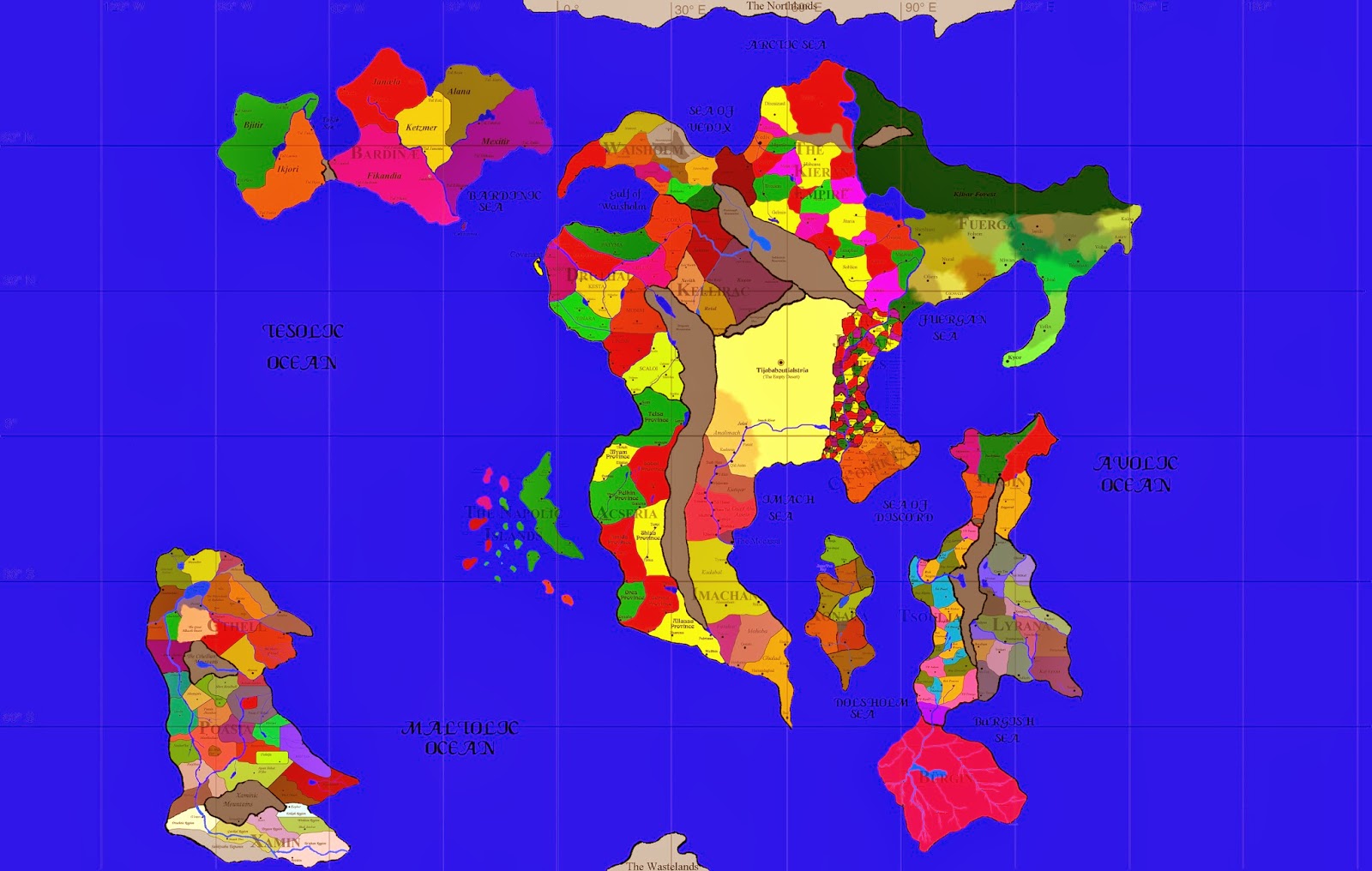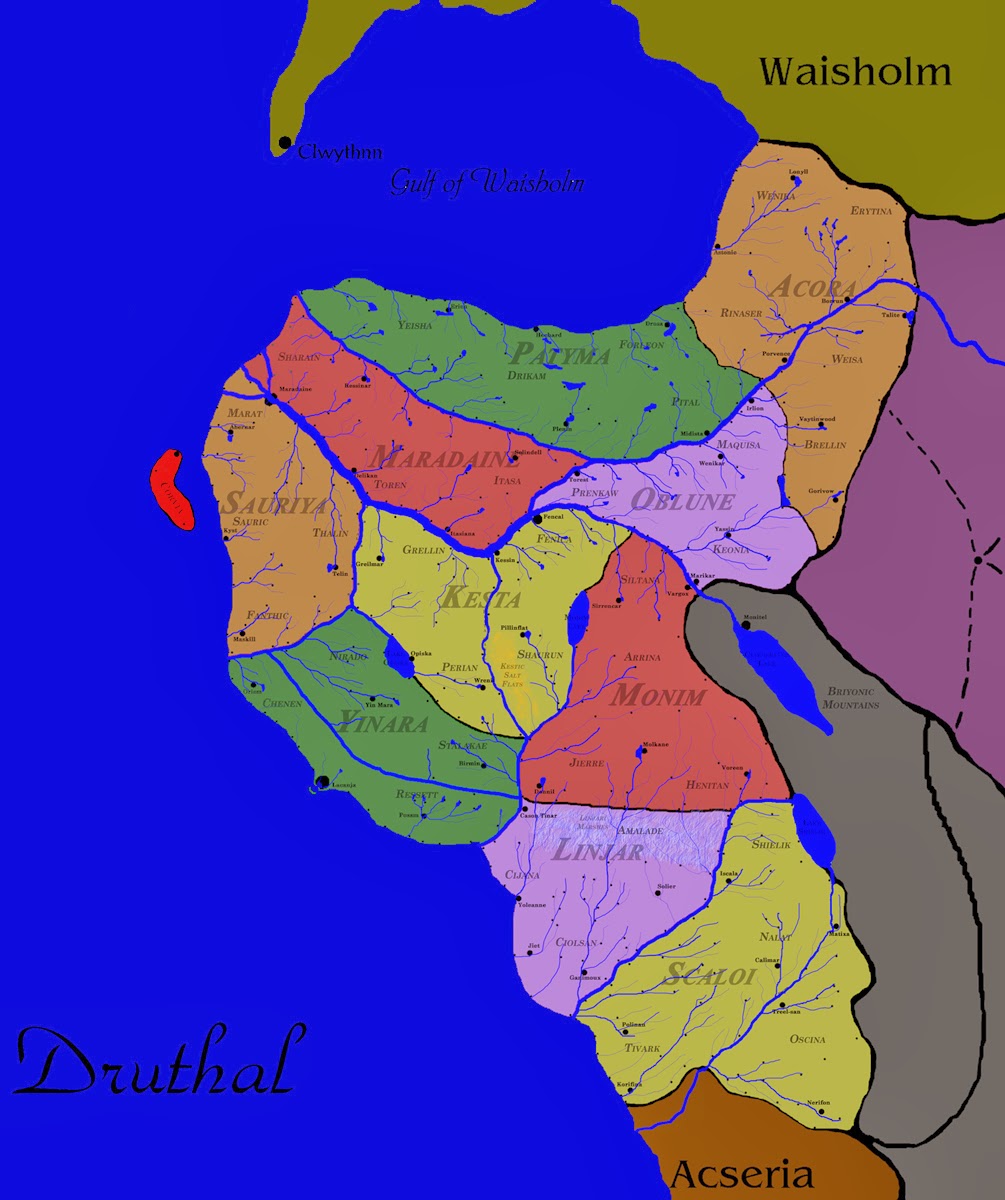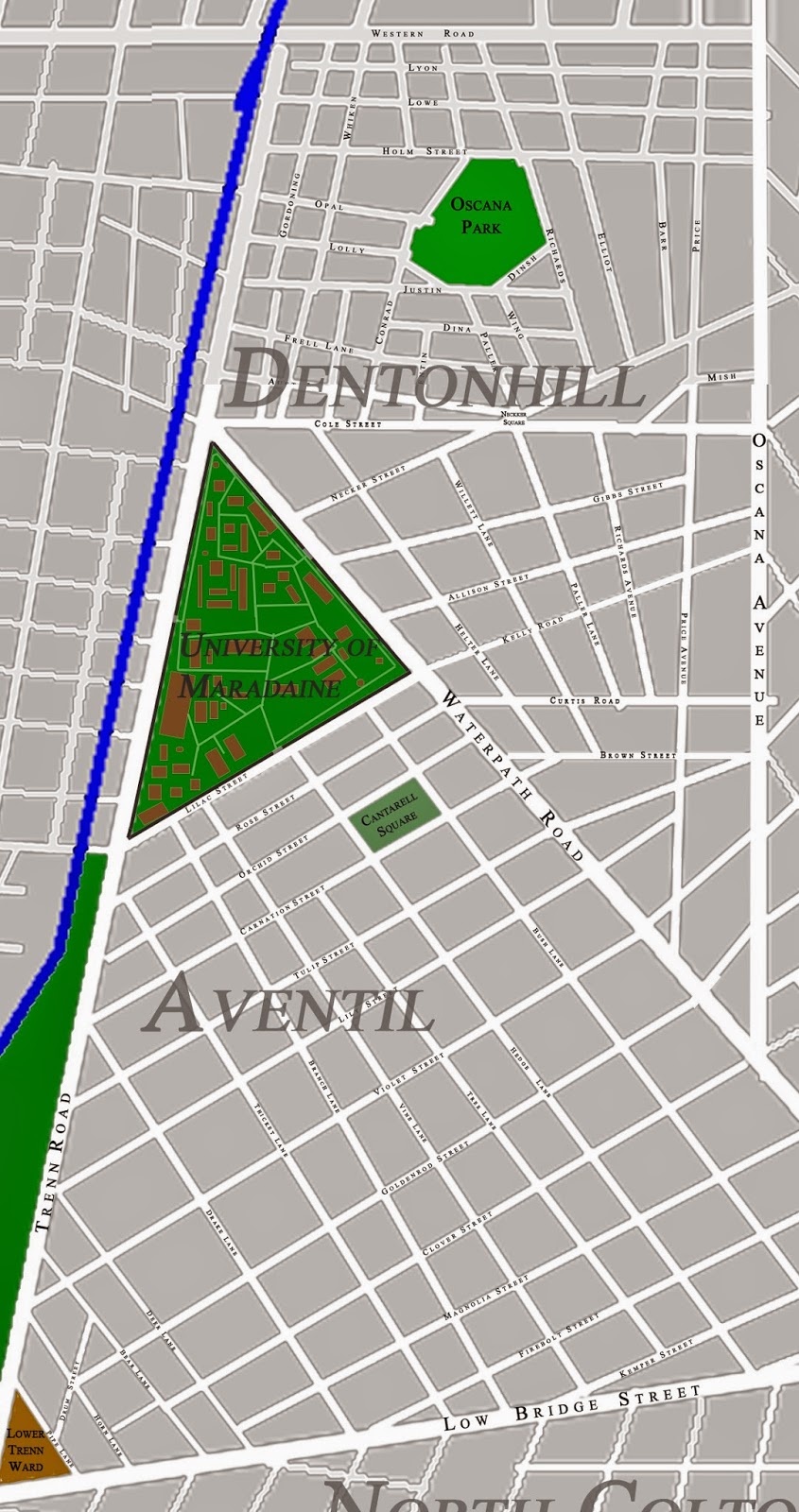I’ve made little secret of the fact that I’m a worldbuilding completist, though even I have a limit of what “completist”would actually mean. For example, in my Banshee setting, that meant having a strong sense of what was going on within 30ly of Earth, a solid framework of 100ly from Earth, and a rough sense of 150ly from Earth.
In the world of Thorn of Dentonhill, I at least don’t have to deal with the infinite vastness of space. One planet is a simple enough limitation, at least in terms of continents and oceans. Draw out a world map, and you’ve defined the scope, and then place the cultures in them.
On this level, I’ve worked out the general concepts behind each nation and culture, and on a map level, the breakdown of districts/provinces and cities. However, for a lot of the areas that aren’t Druthal, that’s the limit of what I’ve done.
For example, while the history of Druthal is a 25,000 word document*, over in the eastern areas of Xonaca or the Tyzanian continent, I have just a bullet-point outline of the history. Can I delve into greater details there? If I need it. Right now, at the very least, I don’t need that at all, and at a certain point that degree of worldbuilding is more distraction that purposeful.
After all the stories I’m writing, at least right now, take place in Druthal, specifically in the city of Maradaine. Now, I’ve built Maradaine as a cosmopolitan city, a place where people from all over the nation, as well as the world as a whole, might end up. So it was important to have a sense of the whole country, and how the finer details could affect the city. This was especially true in the case of Way of the Shield, which deals with Maradaine as a capitol city. With Parliament members from Acora, Monim or Linjar, I need a strong sense of what being from those places mean.
But even knowing all that, the thing I really needed to know was the city of Maradaine itself. Just as you wouldn’t try to write a book about New York City without having a sense of what you were really saying when you mention Soho or the Upper West Side, I needed to know the city itself, and understand what it would mean to live in Aventil or Dentonhill or Seleth or High River. Every neighborhood has its own sense, and to a degree, its own minute history. I wouldn’t work out other major Druth cities like Fencal, Yoleanne or Lacanja with the same level of detail, because, again, I don’t need that at this point in time. Maybe I will never need it. So, again, even for a worldbuilding completist, it would be more a waste of time a distraction from the writing itself.
Now, of course, what I really needed to do– what all stories need from the worldbuilding– is how it works on a personal level. Some of this is micro-managing the geography, which is a level I personally felt I needed to do. I have to admit, I’ve got a certain pet peeve in fantasy books where cities– sprawling metropolises– are little more than towns with no street names, and districts that are more on-the-nose descriptions than actual names. Honestly, when I see that sort of thing, it highlights that the writer simply didn’t do their worldbuilding work, which makes me feel like the work as a whole is going to be sloppy. As I said, there are plenty of details that don’t need to be done, but the ones closest to the story itself should feel full, vibrant and detailed. That way, the story you write in it feels like it’s in a living place, rather than a vague template of a generic setting.
Because, after all, who would be interested in reading about that?
—
*- For my own sense of verisimilitude. In no way will the reading of Thorn or Murder of Mages make you feel like there will be a quiz at the end.





This was a great post!
Thanks!
Great post- I love the maps, such a detailed world you’ve created.
I like a bit of map-making myself, though I think you out-do me!
I find that having a true sense of where everything is in my own head means I’m less likely to over-write when I come to describe it to the reader.